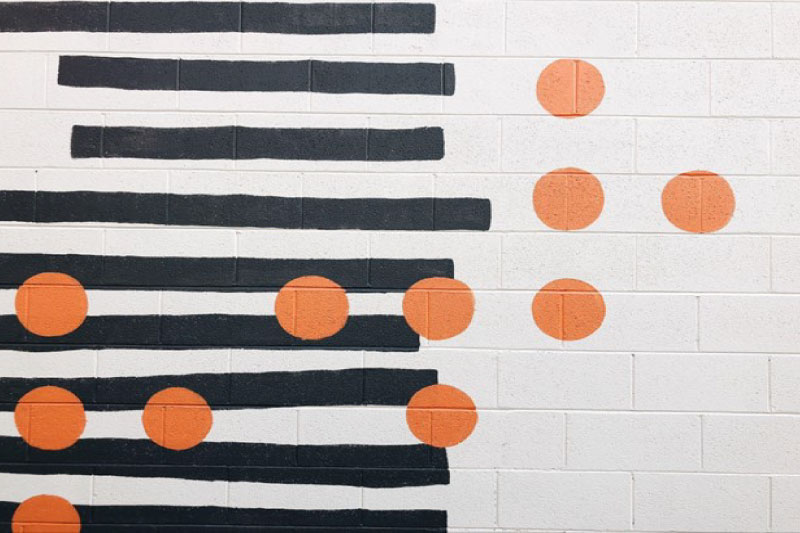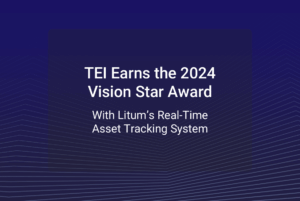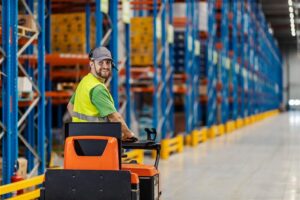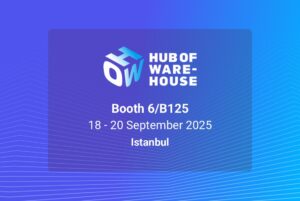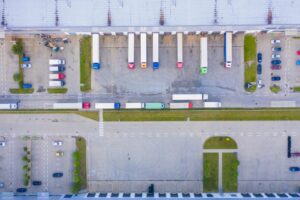In today’s dynamic business environment, instant access to information isn’t just a need — it’s a necessity for staying ahead. Companies in various sectors are finding immense value in real-time oversight of their assets, inventory, and staff. That’s where Real-Time Locating Systems (RTLS) step in. The incorporation of hybrid RTLS technologies is transforming business operations, offering immediate insights in an ever-evolving world.
Contents
What is Hybrid RTLS?
Hybrid Real-Time Location Systems mix different tracking tools into one easy-to-use system. They help businesses keep an eye on their stuff and people accurately in real time, both indoors and outdoors.
The key feature of hybrid RTLS technology is its ability to combine various tracking technologies to provide a unified and adaptable solution. Some of the commonly integrated technologies in hybrid RTLS solutions include:
- RFID (Radio-Frequency Identification): RFID tags and readers use radio waves to identify and track assets or individuals. They are often used for indoor tracking and can provide information about the location and status of tagged items.
- GNSS (Global Navigation Satellite System): This positioning technology relies on signals from global satellite systems, like GPS (Global Positioning System), to pinpoint the location of assets or people. It is highly accurate for outdoor tracking and geofencing applications.
- Bluetooth Low Energy (BLE): BLE beacons are used for indoor tracking, especially in environments like warehouses, manufacturing facilities, and retail stores. BLE provides precise location data within close proximity to the beacons.
- Wi-Fi: Wi-Fi-based tracking utilizes existing Wi-Fi networks to monitor the location of devices or personnel within a facility. It is often used in corporate environments and can provide both indoor and outdoor coverage in areas with Wi-Fi connectivity.
- Ultra-Wideband (UWB): UWB technology offers extremely accurate location data, making it ideal for applications where high accuracy is crucial, such as healthcare or tracking high-value assets.
With Hybrid Real-Time Location Systems, businesses can combine various tracking technologies for a customizable solution. Whether it’s for boosting supply chain efficiency, increasing workplace safety, improving customer service, or maximizing resource utilization, this versatile tool adapts to specific needs.
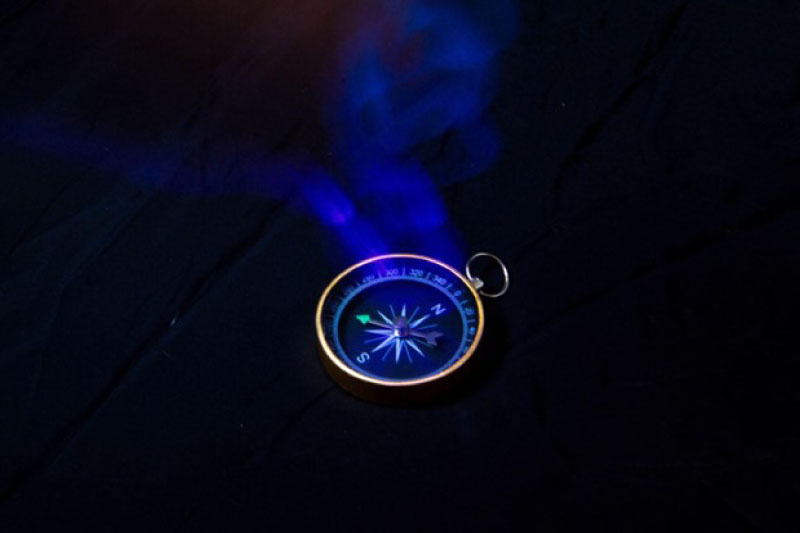
The Benefits of Hybrid RTLS for Indoor and Outdoor Applications
A hybrid Real-time Location System offers a versatile and comprehensive solution for tracking assets, personnel, and equipment across various industries. Here’s a detailed discussion of some prominent use cases for hybrid RTLS:
Healthcare
- Patient and Asset Tracking: Hybrid RTLS can be used to monitor the location of patients within healthcare facilities, ensuring their safety and timely care. It can also track the real-time location of vital medical equipment, such as infusion pumps, wheelchairs, or defibrillators, reducing the risk of misplacement or delays in care.
- Infection Control: In the context of infectious disease outbreaks, hybrid RTLS helps healthcare providers track the movement of staff, patients, and visitors, aiding in contact tracing and infection control measures.
Manufacturing
- Work-in-Progress Tracking: In manufacturing, hybrid RTLS allows for the real-time tracking of work-in-progress (WIP) items on the production floor. This ensures that production processes are efficient, helps prevent bottlenecks, and supports just-in-time manufacturing principles.
- Tool and Equipment Management: Manufacturers can use hybrid RTLS to track the location and status of tools and equipment, reducing downtime and optimizing maintenance schedules.
Logistics and Transportation
- Fleet Management: For logistics companies, tracking the location and movement of vehicles in real time using GPS and other outdoor tracking technologies optimizes route planning, reduces fuel consumption, and improves overall fleet management.
- Cargo and Asset Tracking: Hybrid RTLS helps monitor the location and condition of valuable cargo, reducing the risk of theft or damage during transit.
Retail
- Inventory Management: Retailers can use hybrid RTLS to maintain accurate inventory levels. RFID technology combined with indoor tracking allows for real-time inventory updates, reducing stockouts and overstock situations.
- Customer Experience Enhancement: Understanding customer foot traffic and behavior enables retailers to optimize store layouts, enhance customer service, and deliver personalized shopping experiences.
Corporate Environments
- Workspace Management: In corporate offices, hybrid RTLS can assist in workspace management by monitoring office space occupancy and optimizing desk allocation based on real-time data.
- Safety and Security: Knowing the real-time location of employees during emergencies or security incidents is crucial for ensuring their safety and facilitating timely response.
Supply Chain
- End-to-end Visibility: Hybrid RTLS supports end-to-end visibility of the supply chain, from manufacturing to delivery. This aids in inventory management, demand forecasting, and ensuring the timely delivery of goods to customers.
- Cold Chain Monitoring: For industries like pharmaceuticals and food, where temperature control is critical, hybrid RTLS can provide real-time monitoring of temperature-sensitive shipments, ensuring compliance with quality standards.
Hospitality
- Guest Services: In hotels and resorts, hybrid RTLS can enhance guest services by tracking guests’ movements and preferences, allowing for personalized services and efficient responses to requests.
- Asset Tracking: Tracking hotel assets like luggage carts, room service trays, and cleaning equipment can help improve operational efficiency.
Education
- Campus Security: In educational institutions, hybrid RTLS enhances campus security by tracking the real-time location of students and staff. It can also help locate lost or stolen equipment.
- Resource Allocation: Tracking the utilization of classrooms, libraries, and other facilities aids in optimizing resource allocation and improving the overall educational experience.
These use cases demonstrate the versatility and applicability of hybrid RTLS across a wide range of industries. By providing real-time visibility, precision, and adaptability, hybrid RTLS empowers organizations to streamline operations, enhance safety and security, improve customer experiences, and ultimately achieve a competitive advantage in today’s interconnected world.
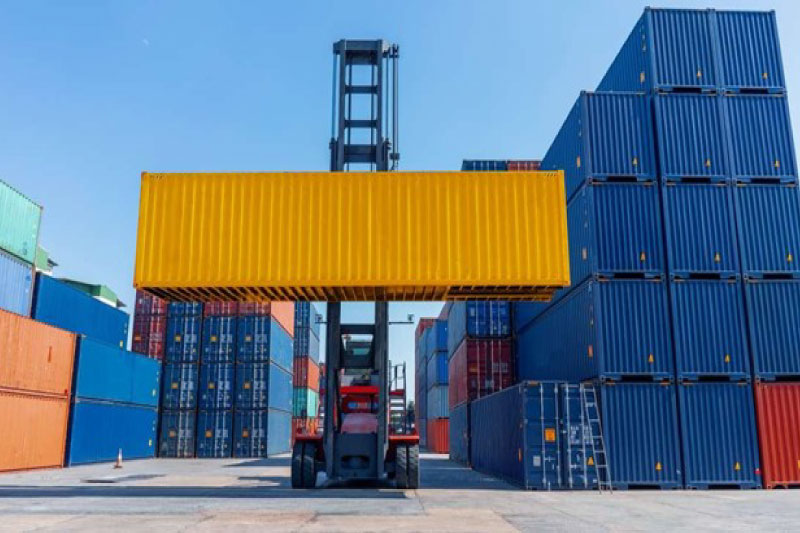
Challenges in Implementing and Utilizing Hybrid RTLS
Implementing and utilizing Hybrid Real-time Locating Systems comes with its set of challenges, despite the numerous benefits it offers. Understanding these challenges is essential for organizations planning to adopt hybrid RTLS solutions. Here are some key challenges:
Complex Integration
- Diverse Technologies: Integrating multiple tracking technologies (i.e., RFID, GNSS, BLE, Wi-Fi, UWB) can be complex, requiring specialized knowledge and expertise in each technology.
- Legacy Systems: Compatibility with existing systems and infrastructure can be challenging, especially in organizations with legacy technology stacks.
Costs and Budget Constraints
- Initial Investment: Implementing hybrid RTLS can involve significant upfront costs for hardware, software, and integration, which may pose challenges for smaller businesses.
- Ongoing Expenses: Beyond initial setup, there are ongoing expenses for maintenance, software updates, and potentially increased energy consumption.
Data Privacy and Security
- Data Protection Regulations: Organizations must navigate complex data protection regulations, such as GDPR, HIPAA, or industry-specific standards, to ensure compliance when handling tracking data.
- Cybersecurity: Protecting the data transmitted and stored by hybrid RTLS is crucial to prevent data breaches and unauthorized access.
Scalability
- Scaling Challenges: Expanding the hybrid RTLS solution to accommodate growing tracking needs or additional locations can be challenging and may require a reevaluation of the entire system.
Interference and Environmental Factors
- Signal Interference: Interference from other wireless devices or structures in the environment can affect the accuracy and reliability of tracking data.
- Environmental Factors: Environmental conditions, such as metal structures or dense vegetation, can hinder the performance of certain tracking technologies, like GPS.
Maintenance and Support
- Regular Maintenance: Hybrid RTLS requires ongoing maintenance, including firmware updates and hardware checks, which organizations must plan for to prevent system downtime.
- Technical Support: Access to responsive technical support is essential for troubleshooting issues and ensuring the system operates smoothly.
Towards a Connected Tomorrow: Delving Deeper into Hybrid RTLS
In an increasingly interconnected world, the demand for instantaneous access to information is crucial. Real-time insights derived from hybrid RTLS technologies are propelling businesses forward, setting new benchmarks in efficiency, safety, and customer experience across diverse sectors. The versatility of hybrid RTLS is evident in its applications, from healthcare to logistics and education.
Navigating the intricacies of advanced location technologies, especially ones as multifaceted as hybrid RTLS, requires a blend of careful planning and seasoned expertise. The journey of understanding and potentially implementing such systems presents its own set of complexities and challenges. If you are curious about the potential of such evolving technologies or seeking insights on the challenges they present, a conversation can shed light on many aspects. Contact Litum today to discover more.
